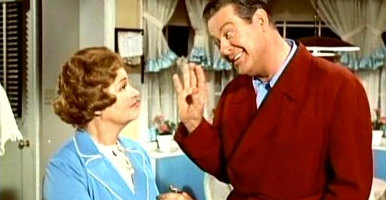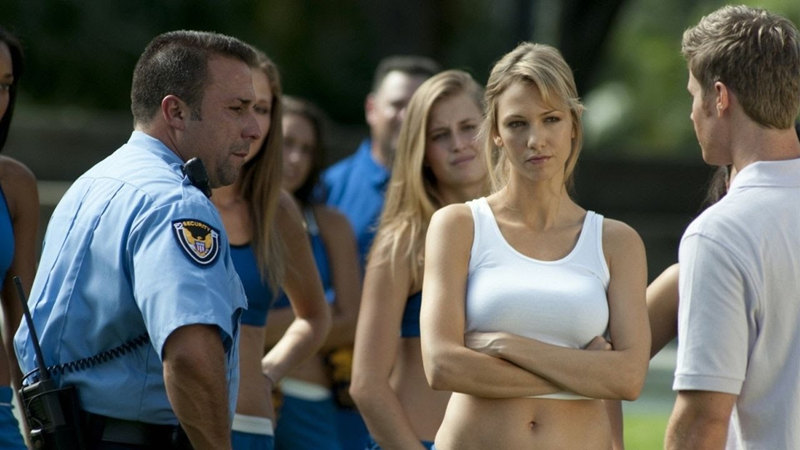“Moneyball” is reminiscent of “Jerry Maguire.” It’s a sports movie that’s more about people than it is about sports, which makes it appeal to a wider audience–even my wife, who’s not a big fan of sports movies. That’s because it’s not all about wins or losses, though they’re certainly a part of the film. It’s about how the game is played–and, as in “Jerry Maguire,” that means off-the-field and behind-the-scenes more than game-day contests. It’s about people who put their beliefs on the line, who negotiate difficult relationships as often as they do player deals.
Based on a true story, “Moneyball” stars Brad Pitt as Billy Beane, the former major leaguer whose unconventional approach to managing the 2002 Oakland A’s raised a lot of eyebrows and drew heavy fire before his system was vindicated with a record 20 consecutive win stretch and a finish that took them to a deciding game of the American League championship series.
That was where the A’s got the previous season with stars Jason Giambi, Johnny Damon, and Jason Isringhausen, before those guys were snapped up by big-market teams that could afford to pay more than Oakland. Based on the Michael Lewis book Moneyball: The Art of Winning an Unfair Game, this drama tells the story of how Beane, with help from an assistant who was a whiz with numbers (Jonah Hill, in the film version), reconfigured the team so that it could contend despite having only a fraction of the payroll of teams like the Yankees. Beane thought that big money was ruining the game he loved, so he took exception . . . and action.
There’s a lot of number crunching in the film, but math never seemed so enjoyable. “Moneyball” has a natural tension that’s sustained in part because we realize from the very beginning that this isn’t just another David and Goliath story or a typical tale of an individual going up against the system. It has the same kind of high-stakes energy as a Vegas weekend or a day in the trading pits.
And speaking of pits, Brad does a phenomenal job bringing Beane to life. Like “Jerry Maguire,” a side plot involving a child is an integral part of the story. As busy and as harried as he gets, Beane finds that his guitar-playing daughter (Kerris Dorsey) grounds him and helps him put things in perspective. But don’t look for the kind of romance that was so much a part of “Jerry Maguire.” There’s romance here too, but it’s the romance of the game, as Beane says more than once. Baseball is his true love, which explains why he’s divorced from Sharon (Robin Wright).
The pleasure of this film comes from watching Beane work his magic, whether it’s putting a by-the-book manager (Philip Seymour Hoffman) in his place, bonding with the team’s star (Stephen Bishop as David Justice), or championing a washed-up player (Chris Pratt). Despite the numbers, it really is about people, as illustrated at one point by Beane’s actions based on emotion that, combined with the “moneyball” scheme, really spark the team to victory.
Steven Soderbergh was originally hired to direct the picture, but reportedly left because of creative differences. He was the one who hired Pitt, but it was Bennett Miller (“Capote”) who took over and decided on Hill as the second lead. That turned out to be a stroke of genius. Hill and Pitt work so well together that you forget they’re acting . . . and, of course, that’s the whole point of filmmaking “moneyball,” isn’t it?
Don’t look for any fancy camerawork. It’s mostly middle shots and two shots, from a standard audience point of view. But there are a few memorable frames, as when we see a reclining Beane in the empty seats of the ballpark at night, or the camera pulls back on him and his assistant and we see them again in the brightly lit box above the stadium, doing their number crunches at all hours. “Moneyball” runs 133 minutes, but it doesn’t feel long. And that’s the biggest compliment you can pay a film.
Video:
“Moneyball” includes a number of vintage clips, some rough TV broadcasts, and some deliberately aged segments, so it’s tough to give it a video rating across the boards. But for scenes in the present there’s only a slight-but-pleasing layer of film grain, strong but not overly saturated colors, natural skin tones, and solid blacks. I’ve seen stronger edge delineation, which is key to conveying the hint of 3-dimensionality that HD is capable of doing, but it’s a generally solid picture. “Moneyball” was transferred to a 50-gig disc using AVC/MPEG-4 technology, and presented in 1.85:1 aspect ratio.
Audio:
The standard English DTS-HD MA 5.1 audio offers the occasional startling off-camera sound effect, reminding you that despite a dialogue- and front-heavy soundtrack there is still a discernible separation of sounds distributed across all five channels–though the LFE channel doesn’t get much of a workout. But dialogue is clear, and mercifully once you decide on a volume level you don’t have to make any adjustments, as is too often the case with films these days.
Extras:
Exclusive to Blu-ray is “Drafting the Team” and “Adapting Moneyball,” two featurettes that explore the casting and novel-to-screen aspects of the film. In addition, there are a handful of deleted/extended scenes; a longer making-of feature (“Moneyball”: Playing the Game) that offers a wealth of behind-the-scenes footage; a feature called “Billy Beane: Re-inventing the Game” that includes the real Billy Beane on-camera, but doesn’t tell enough about his life; and a blooper reel that has Hill off-camera and a close-up on Pitt, who can’t keep it together. It’s one of the longest blooper segments I’ve seen, but Pitt laughs so hard he has to wipe back tears, and pretty soon you’re laughing right along with him.
Bottom Line:
“Jerry Maguire” just got some overdue company with “Moneyball,” which features Pitt and Hill in perhaps their most likable roles. But as you watch this film you begin to realize that the game’s claim to be the Great American Pastime is probably overstated. It’s what goes on behind the scenes (and shown in this film) that’s really the Great American Pastime.


